Our Blog - Lyon Day 1
After a very early morning (the train left at 5:45am), and a 20 minute delay, we arrived in Toulouse fairly early. We picked up our Lyon City cards (which we decided to try) and headed by public transportation to our hotel. I must say, I wasn't really impressed by the Part-Dieu train station, perhaps because it is not "old". It was built in 1978 as part of an urban neighborhood project in the Part-Dieu section of town. It is part of a huge complex that includes a huge shopping mall, the tallest skyscraper in the region (nicknamed the Pencil due to its' shape), and a major government office complex.

We stayed at the Best Western Sainte-Antoine, which is just a block off the Saône River on Presque'Ile. The price was good for the central location, and the hotel itself was quite nice, with clean, modern hotel rooms (normal for European standards, small for American standards). If you stay there, I recommend you forego the breakfast and go to one of the 2 little places on the same street (Pain des Jacobins, which has a couple tables, and Slake Coffee House, which has plenty). Unless you just want to stuff yourself on a continental buffet, these both are great and about 1/2 the price.
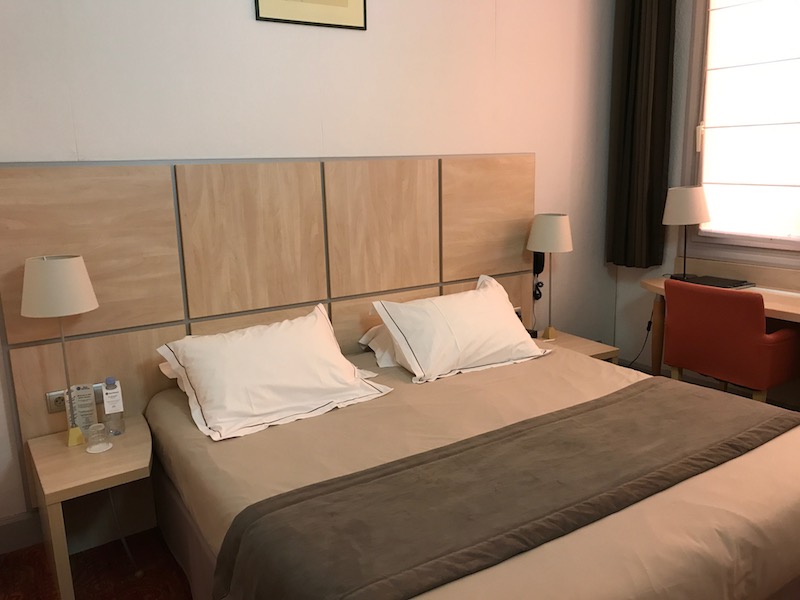
First "real" stop was for lunch, and we just found a little bistro by the river, a little up from the hotel. It was a pretty eclectic place, with bright red walls and interesting art, along with dolls around the top. The best part was that there were 2 old puppies (dogs, really, but I like to call them puppies) that hung around and one of them came over and sat under our table so we could pet him. Food-wise, it was very typical French ... a pork tenderloin cooked with a light sauce and gratin potatoes, and a piece of fish pan-fried along with steamed green beans.
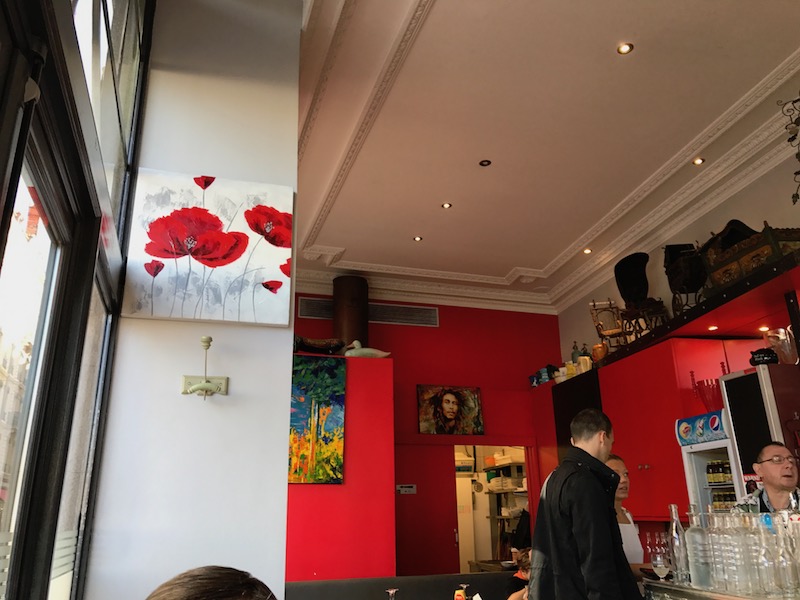
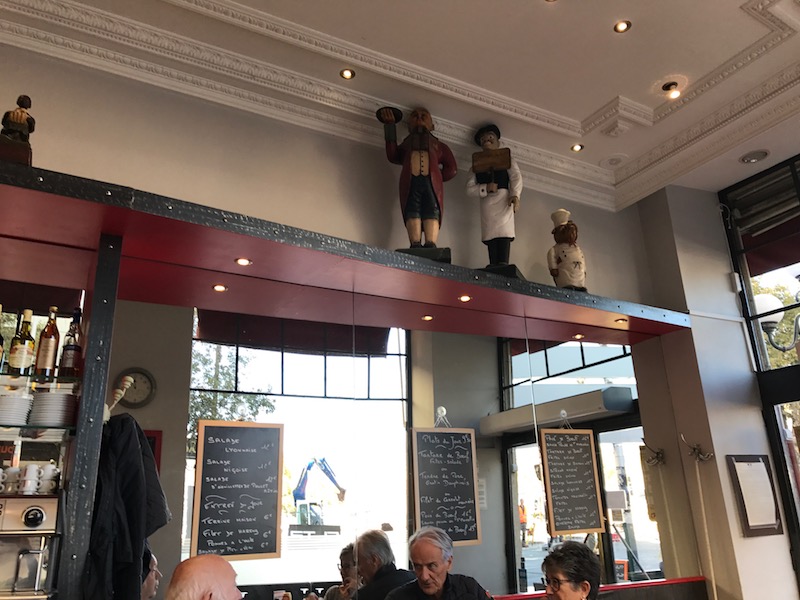

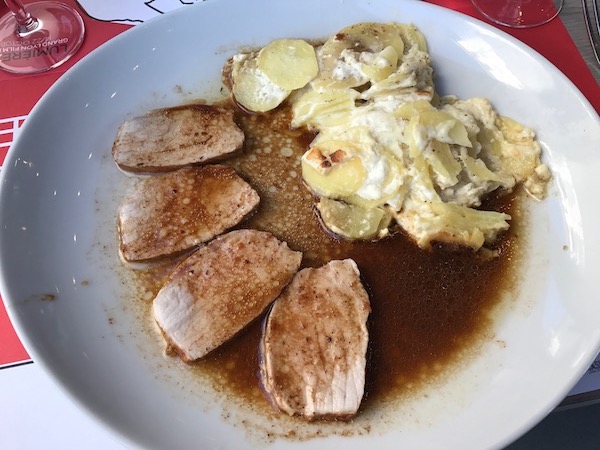
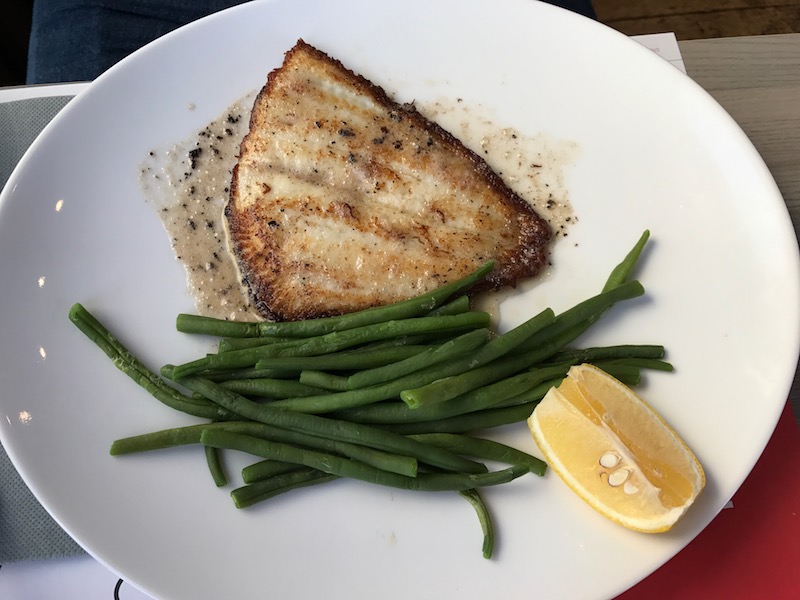
The Basilica of Notre-Dame de Fourvière is probably the main tourist sight in Lyon and is probably what it is most known for. It was built with private funds between 1872 and 1884 in a dominant position overlooking the city. These are just taken from the Saône River (either on a boat or from the banks). You'll see more detailed and up-close pictures (and more details) in Day 2.

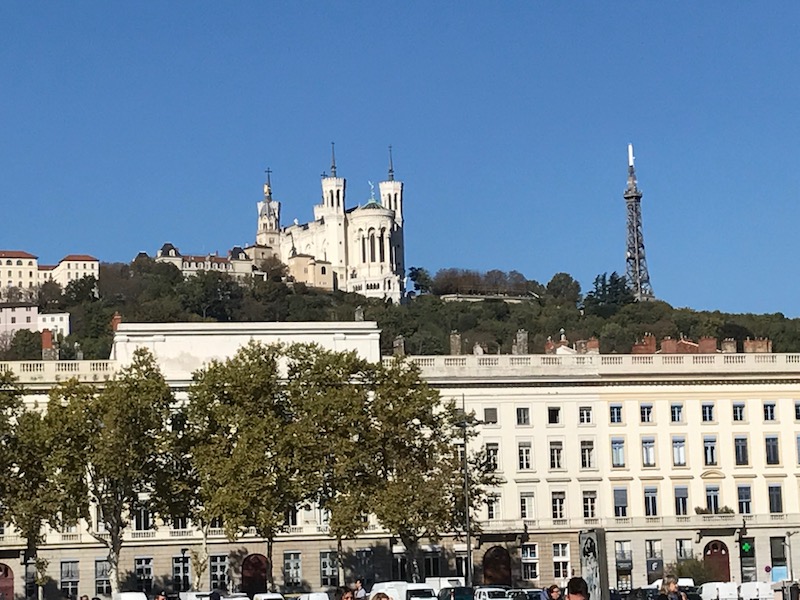
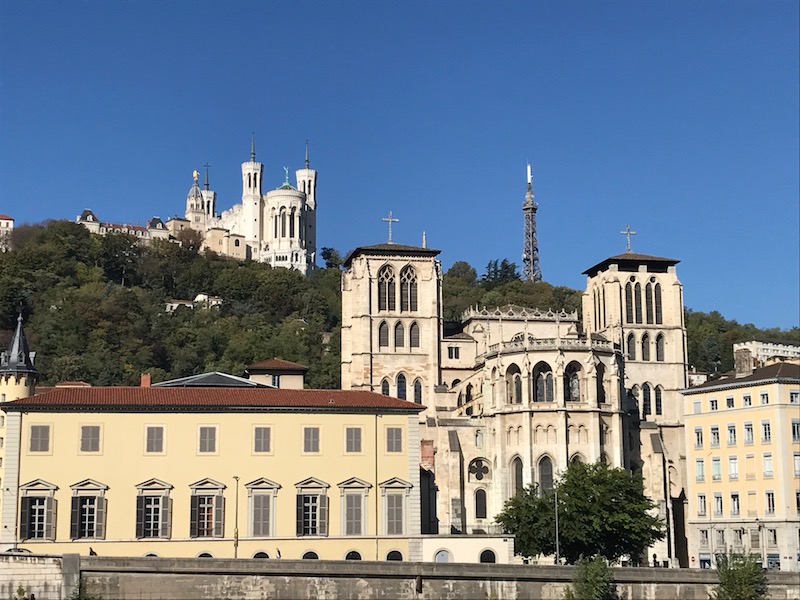
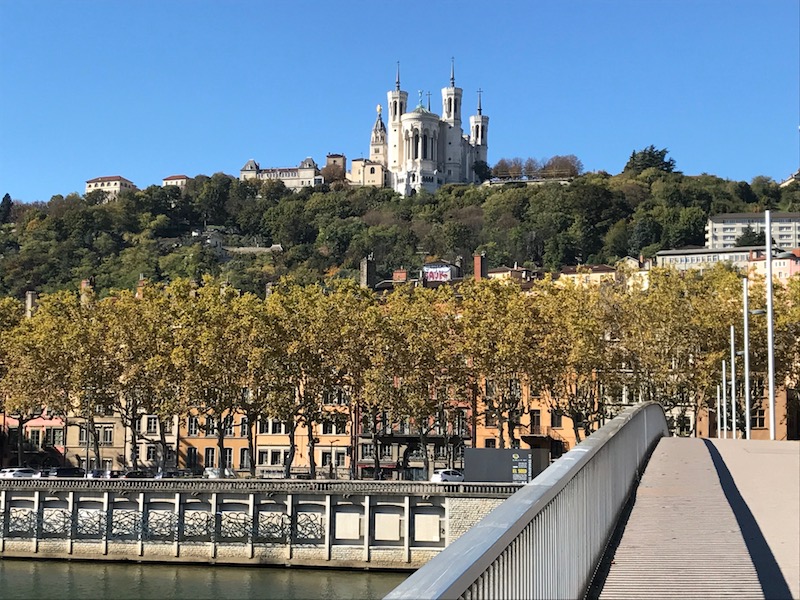

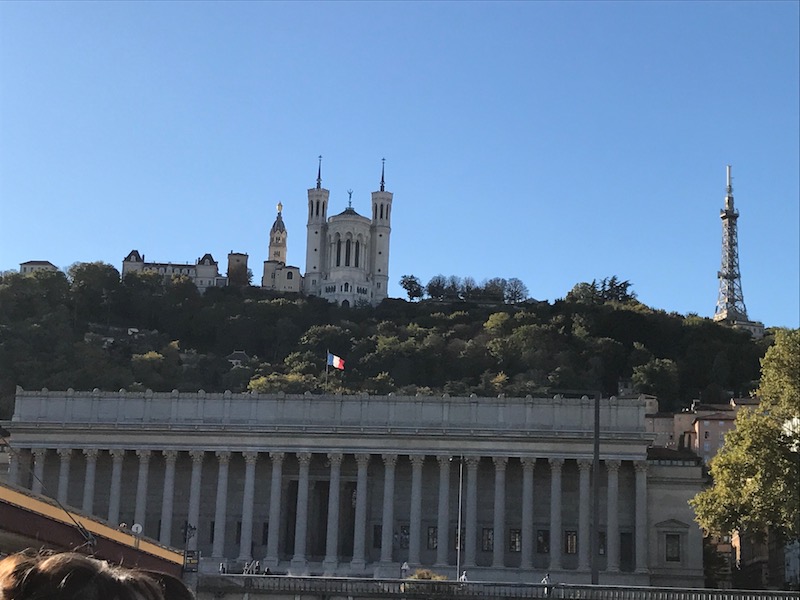

The Basilica is up on the hill, above what today is the Court of Appeals. The building, nicknamed the 24 columns, is the Palais de Justice, built in 1835 by Louis-Pierre Baltard. It is a neo-Classical building with 24 columns, inspired by Ancient Greece and Ancient Rome.
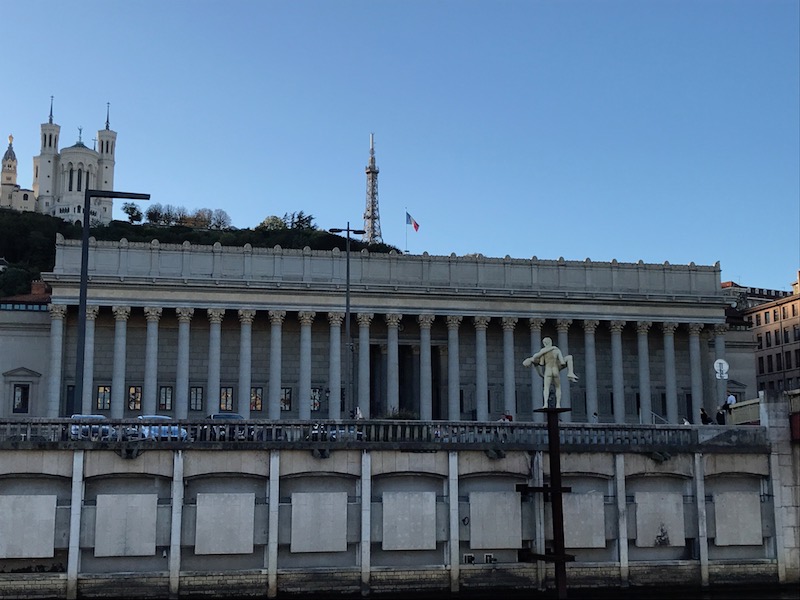
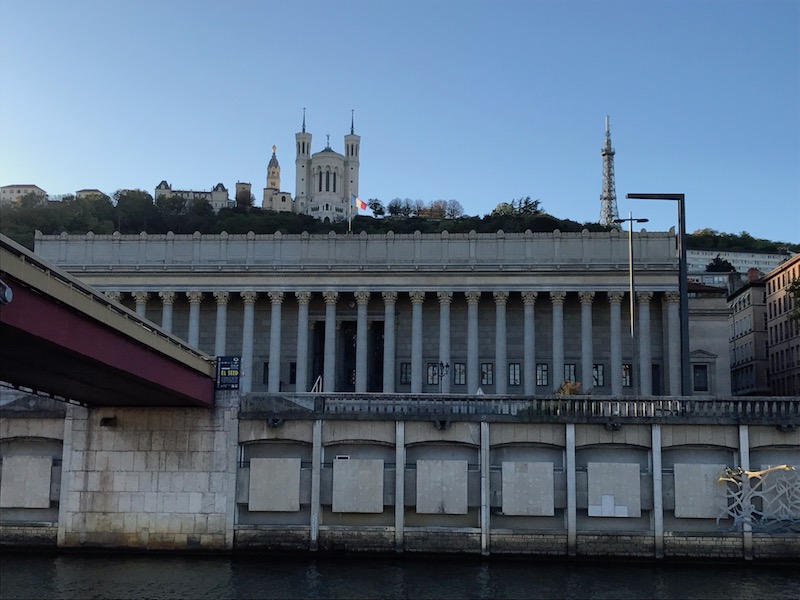
Place Bellcour, which you can't really see here, is a HUGE square, and was the royal parade ground. At 15 acres (did I say HUGE?) it is one of the largest open squares (i.e. without any patches of greenery or trees) in Europe, and the third biggest square in France, behind the Place des Quinconces in Bordeaux and the Place de la Concorde in Paris. This day, it just so happened to have a special event with vendors from the region of Auvergne-Rhone-Alpes. There were tons of things ... lots of honey and confiture, wines, candy, sausages, and breads. One of the things we like about living in a city in France is that they have something happening almost every week. This was just a 1-day thing, and it just happened to be on one of the days we were in Lyon.

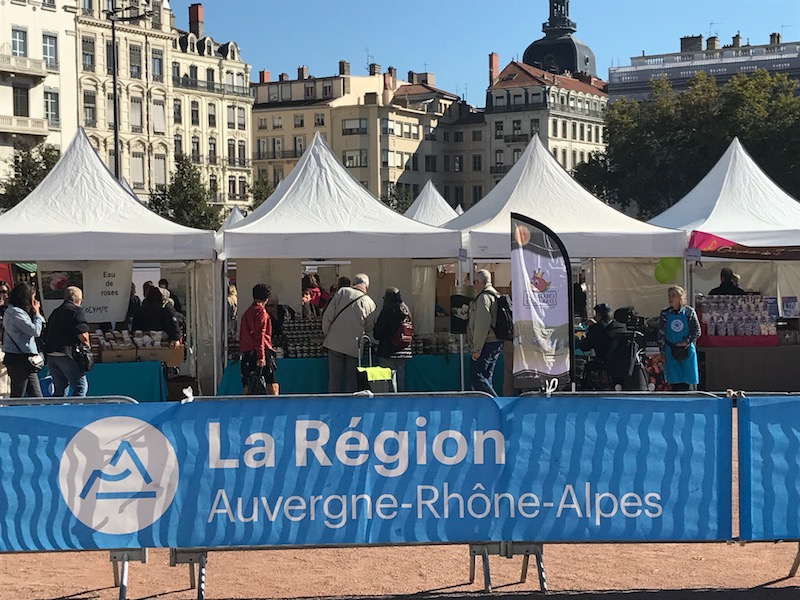

In the middle of the square is a huge statue to King Louis XIV, the Sun King, that was erected in 1713. Unfortunately, the sun was NOT helping when I was trying to get a picture of the front of the statue. At the base of the statue are two allegorical statues of the Saône and the Rhône, created by the brothers Nicolas and Guillaume Costou in 1720.
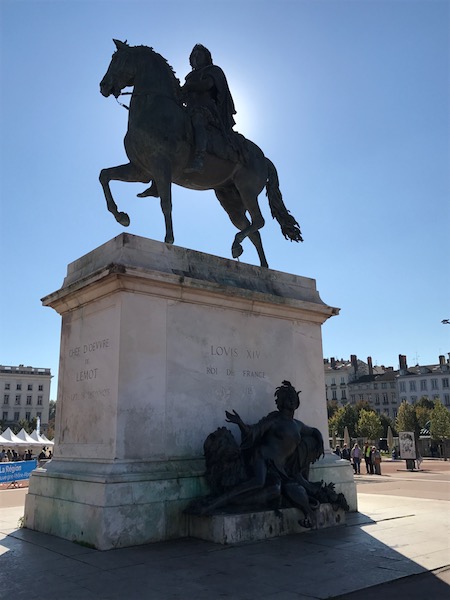
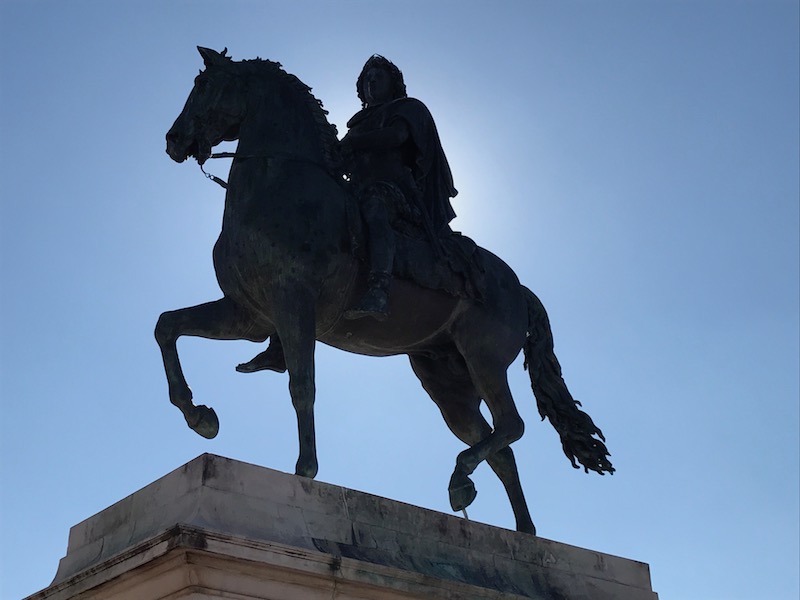

The Passage de l'Argue is near the hotel, and is a covered shopping passage. If it looks like those in Paris ... well , they are built on the same model, and is one of the oldest arcades outside of Paris. In 1836, the passage had 96 arches. The entrance has an arch supported by Doric columns. This hall represents a particular style of architecture in Lyon and resembles that of Italian galleries in Rome or Milan.

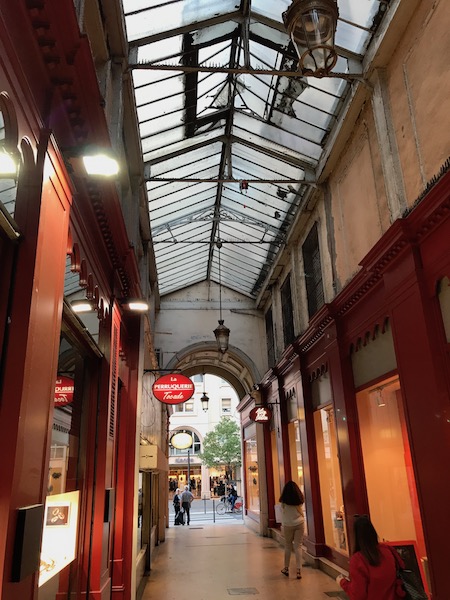

Musee Gadagne building, called the Hôtel Gadagne, a building constructed in the early 16th century by a couple brothers and then underwent a redesign in 1545 when it was bought by 2 Florentine brothers (where it gets the Gadagne name). Supposedly they fought so much that they lived in different parts of the house. You can see that it seems multiple buildings put together, each with a slightly different style and color. But you can key Renaissance elements, like turrets where spiral staircases are located, mullion windows, and galleries that connect two different buildings around a central courtyard. There is also an old well, which you see in almost every Renaissance building.
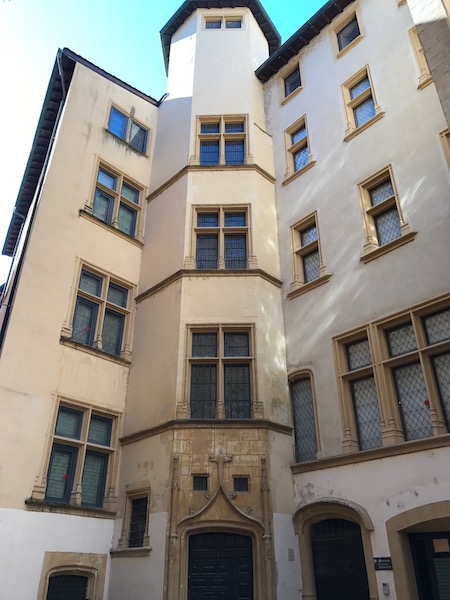

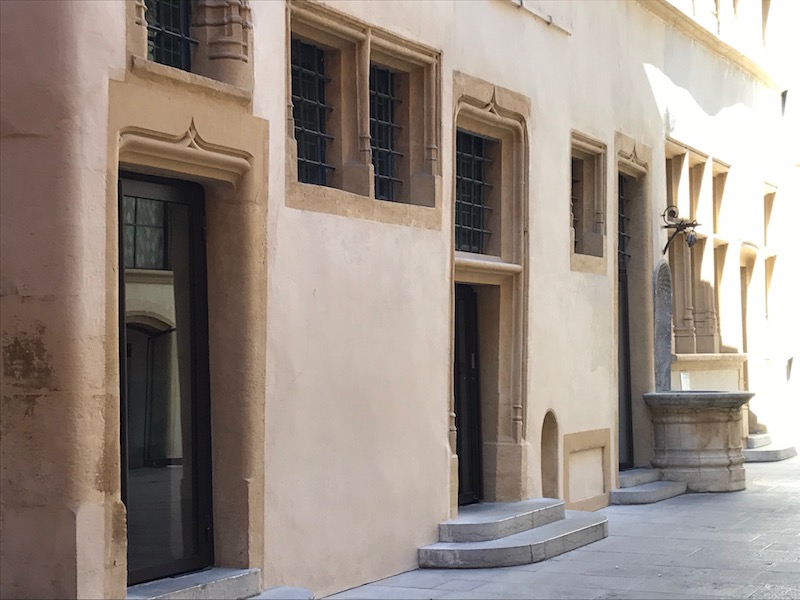
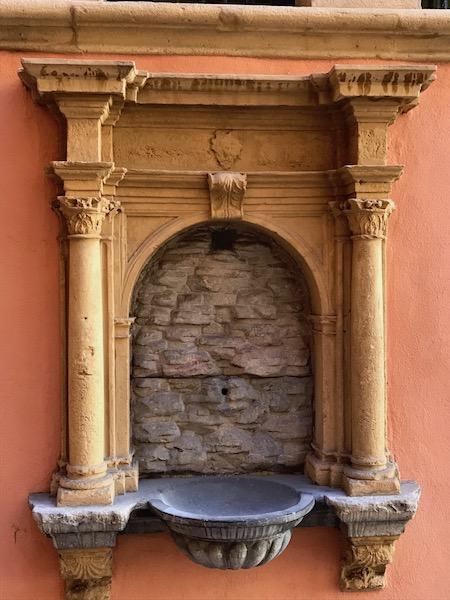
The Musée d'histoire de Lyon traces the cultural history of Lyon since the Middle Ages until the nineteenth century. This first picture, a marble bust dating to the end of the 1st century BC, was found during excavations within the courtyard of the museum itself.
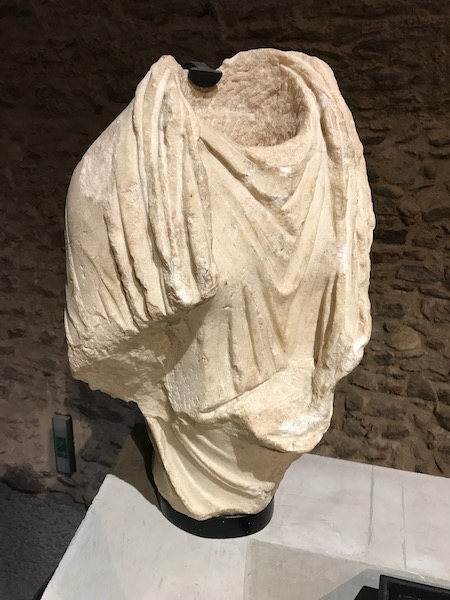
The first bas-relief is carved from limestone and was part of an Abbey on the Ile Barbe (within the Saône River). It shows two birds beak-to-beak. The second, also from the same Abbey shows a griffon's head with a bird's body.
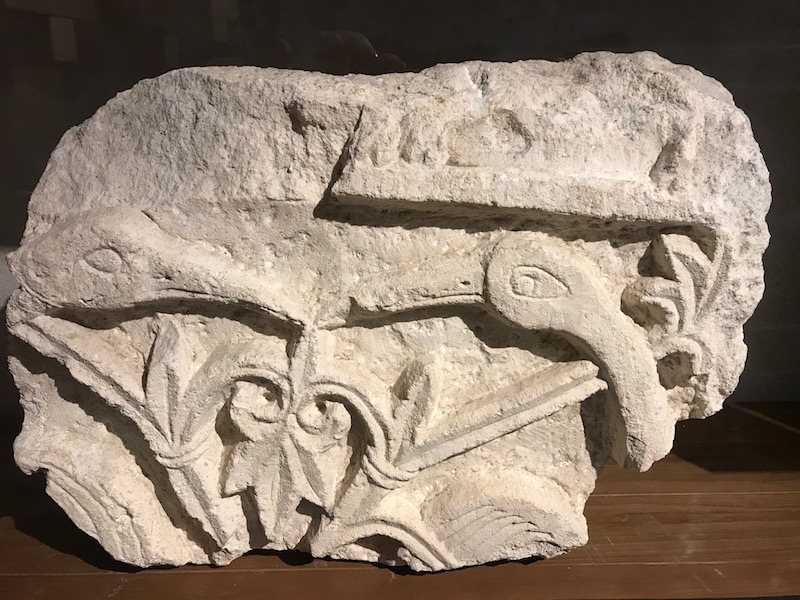

You'll end up seeing LOTS of mosaics on Day 2, when we go to the Archeological Museum, but this is a fragment of a mosaic also from the Ile Barbe Abbey, dating to the 12th century.
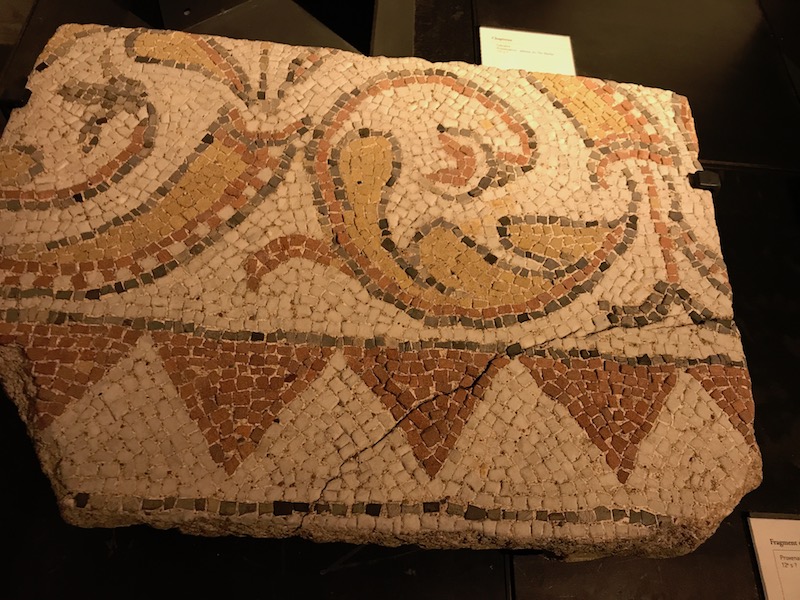
We are actually quite amazed at how nice some of these things are, especially dating them back. This one dates to the 12th century, also from the Abbey. Look at the detail in these limestone carvings!
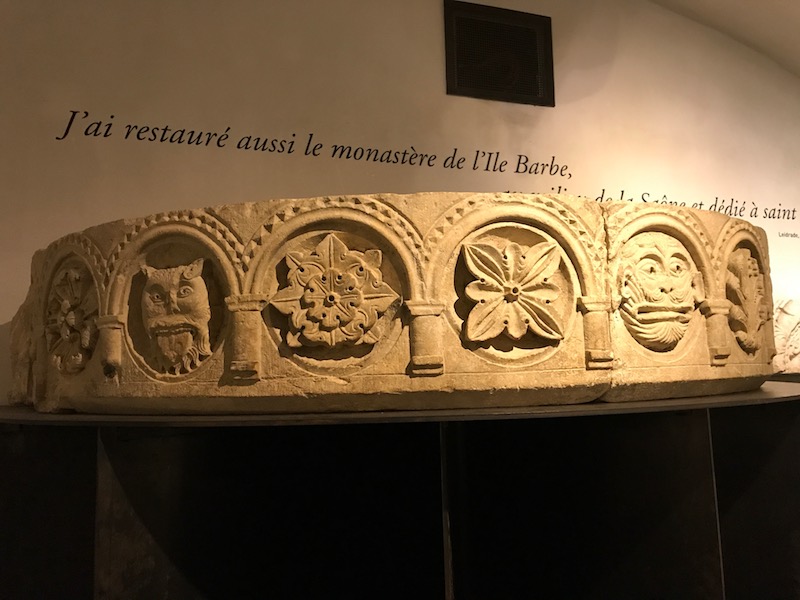
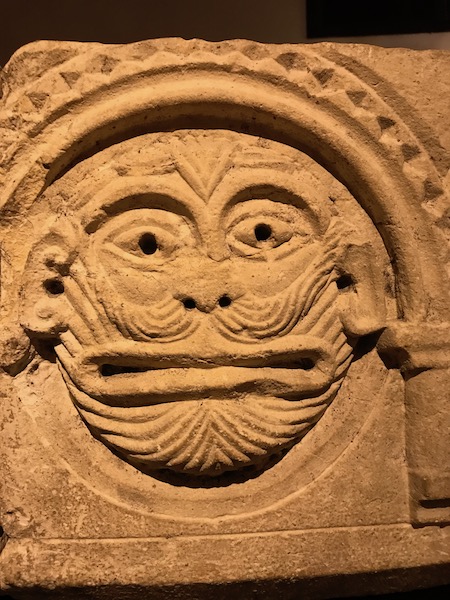
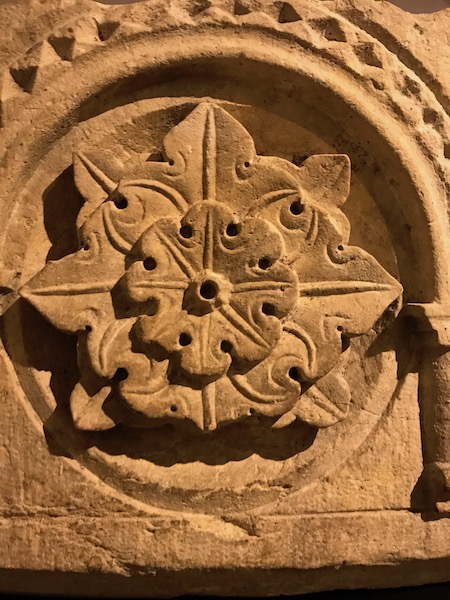
There were some carved limestone zodiac symbols from Eglise de Saint-Foy dating from the end of the 11th century, and we both are Sagittarius.

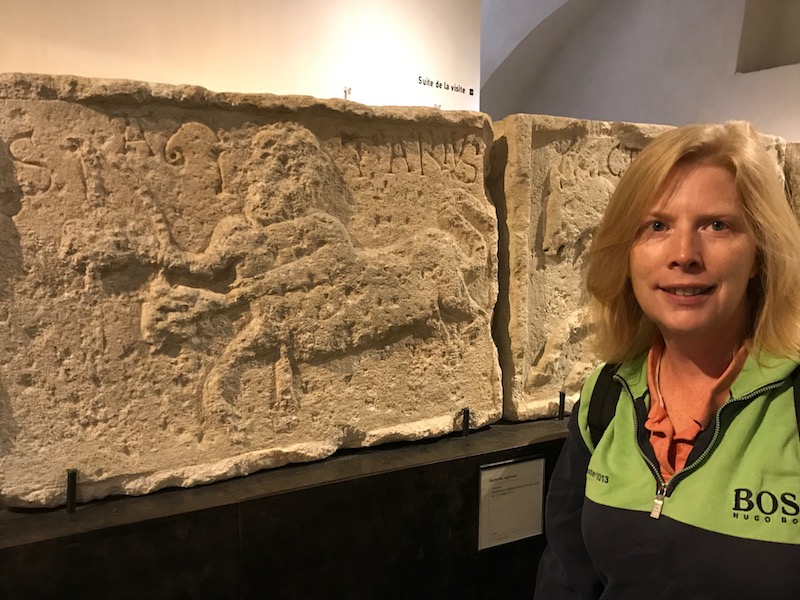
We also got a few views of just the rooms, mostly on the upper floor. They have a very typical "tomato" red tile flooring (we've seen these in other chateaus) and the wood ceilings. There is a HUGE fireplace although the cast iron fireplace seems to have been added later.
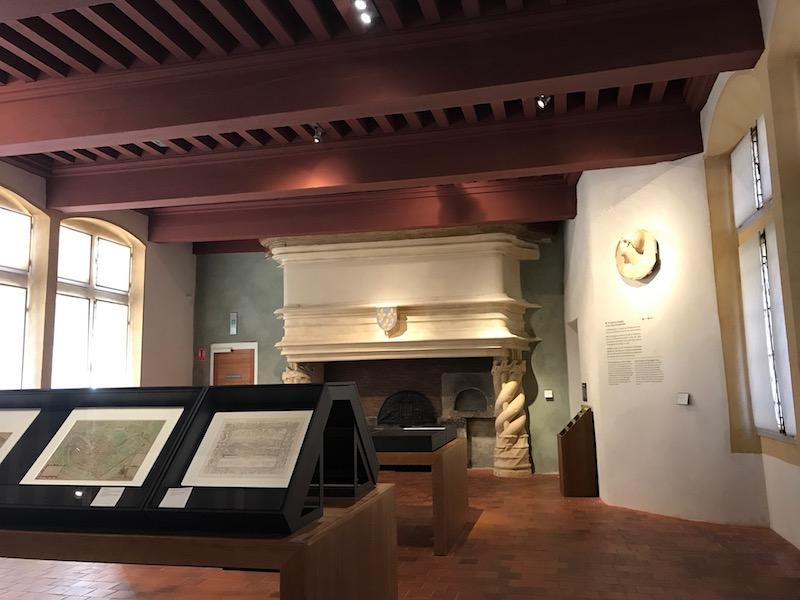

These are playing card molds. Printing was a big industry in Lyon, and during the 18th century, French books and playing cards (in general) were either printed in Paris of Lyon.
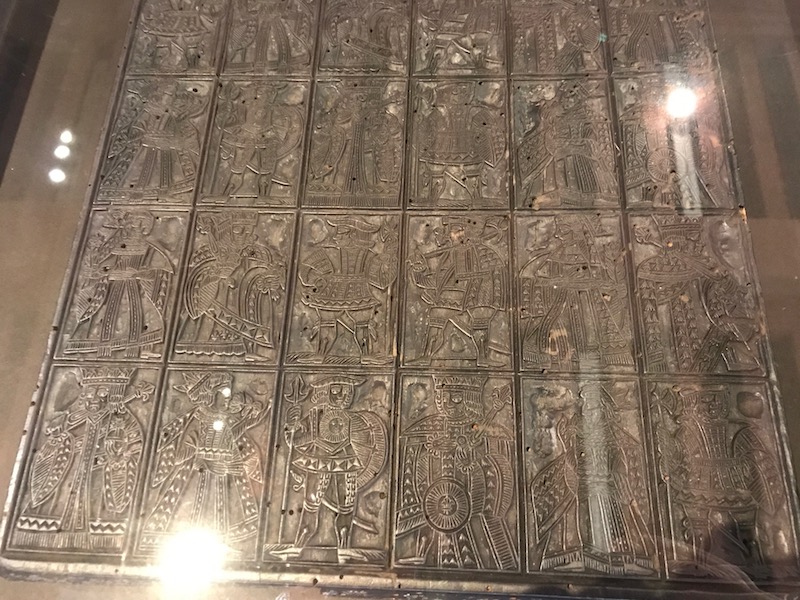
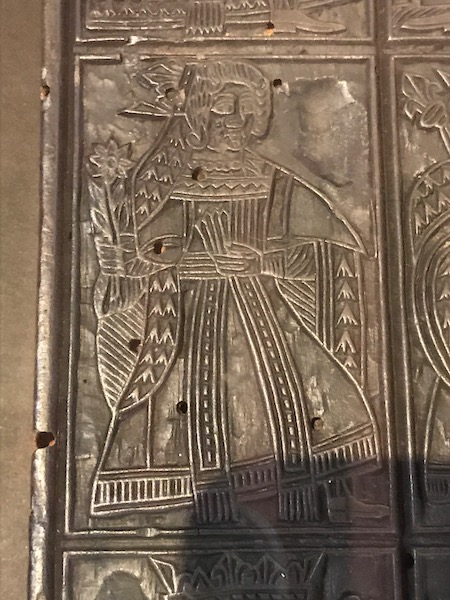
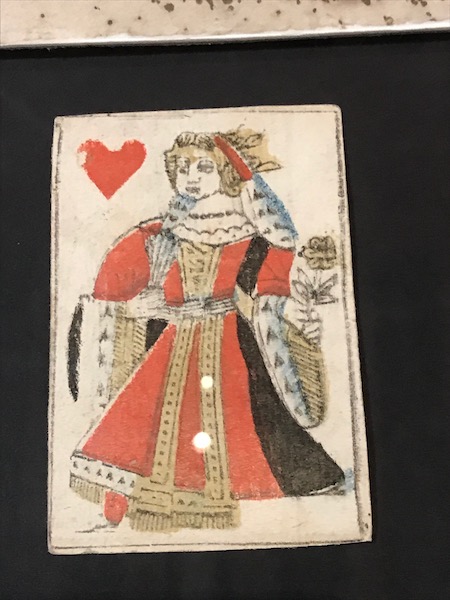
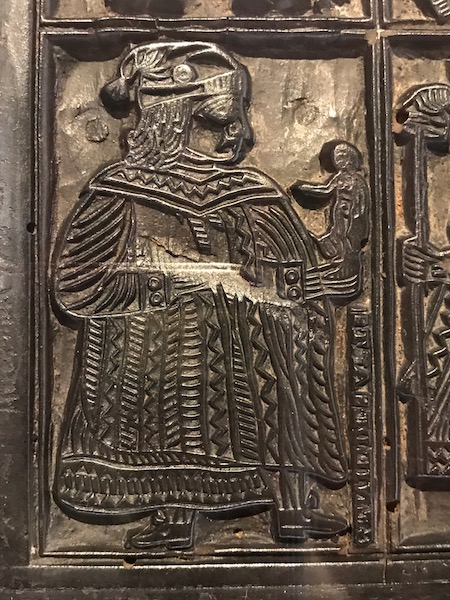
Also in the same buildings is the Puppet Museum, which houses a collection of about 2000 puppets from Lyon. Lyon is the home of Guignol, a puppet from the late 1700s. The puppet is the main character in a French puppet show (of the same name) and represents the workers in the silk industry of France. The story goes that the puppets creator was a modest silk weaver but was not able to support his family during the French Revolution and became a peddler and a tooth puller (yep, that is what I said ... a dentist at that time just pulled the teeth). He pulled them for free and then sold medicine to take away the pain. To attract patients, he started a puppet show, which made him famous (so much so that he quit pulling teeth). This Guignol dates back to 1808.
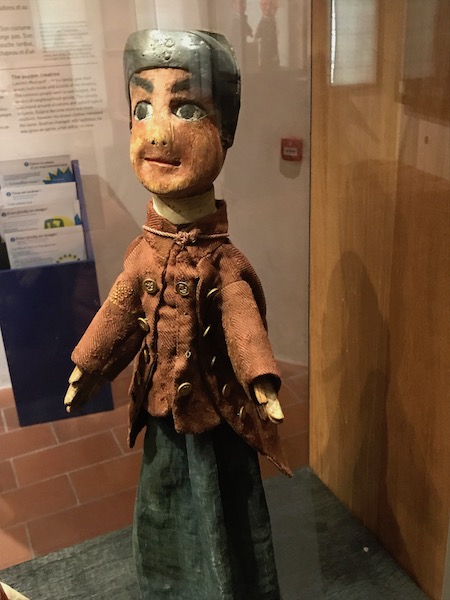
There are other puppets within the museum, including Punch and Judy, and a puppet from Indonesia which uses rods to move the arms (called Wayang Golek).



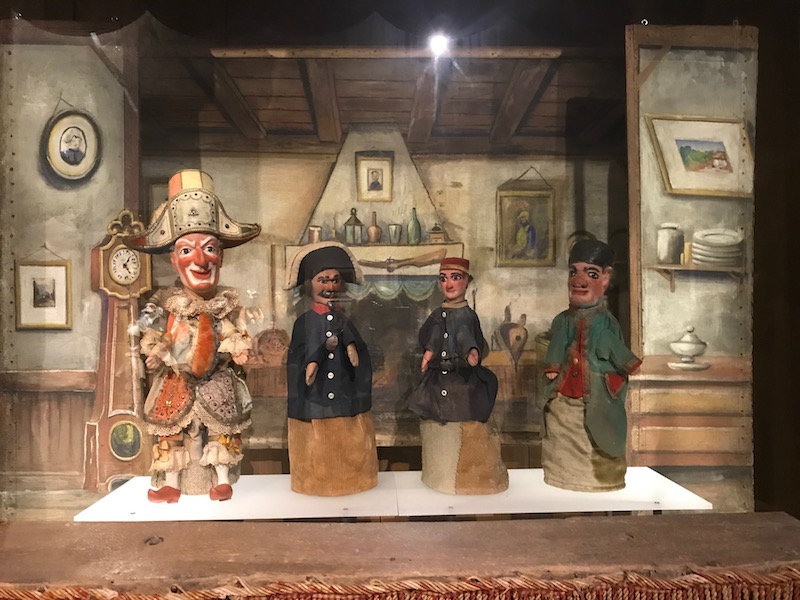
There is a Garden with various plants and a well (as water is essential for gardens). They have chairs that you can use to just relax, enjoy the day, read a book, whatever. The last picture attempts to give an idea of this part of town, which is built back into the Fourviere hillside. There are large retaining walls and houses built up above.
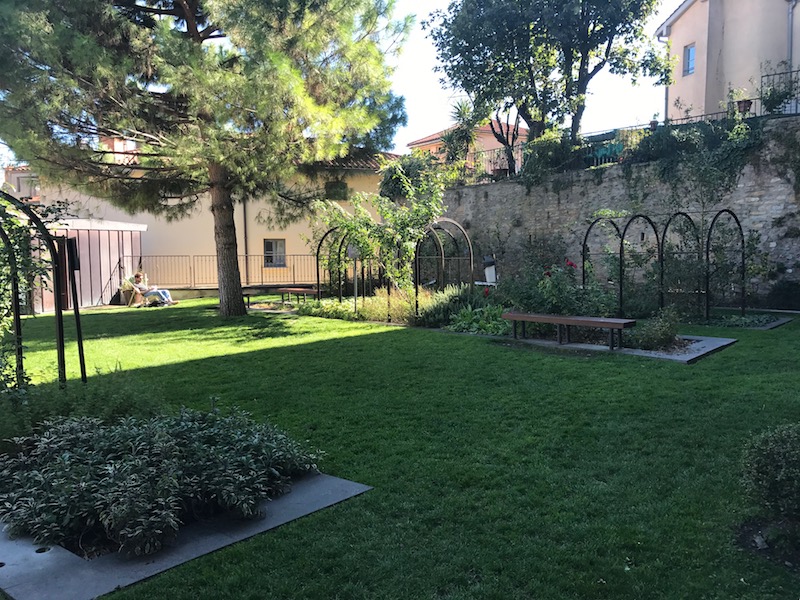
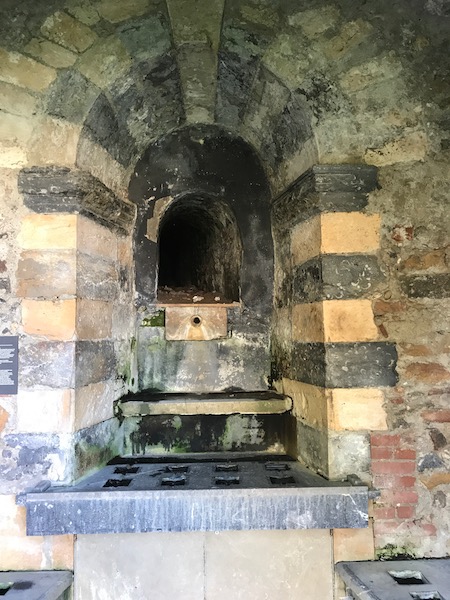

Near the museum is Rue Juiverie, which dates back to Roman times. In the 1st century, King Louis the Debonnaire gave Jews permission to settle and build a synagogue here (hence the name of the street). There are signs hanging which are the coat of arms of various "Aldermen", dating back to 1294, although these were all from the 1700's.
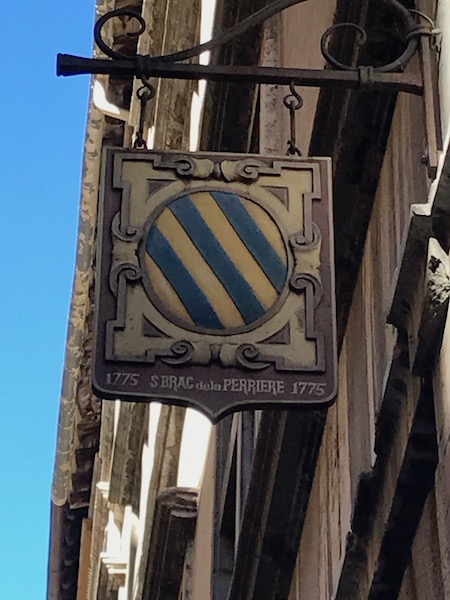
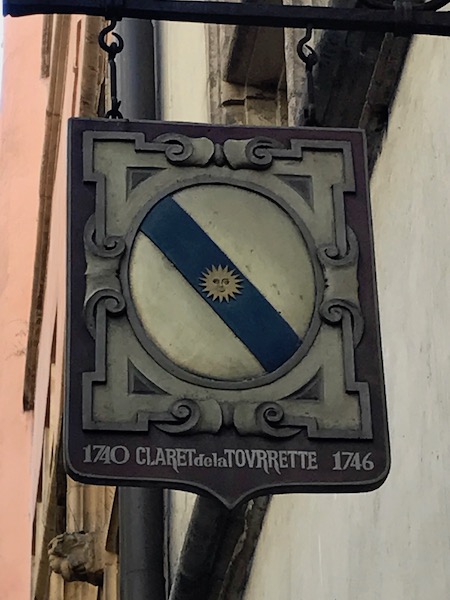
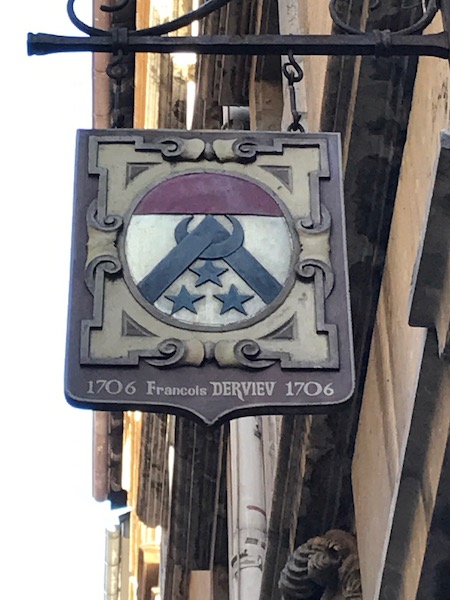
Most of the facades are beautiful, with Renaissance mullioned windows, doors with caryatid sculptures, and many with lions on the facade.
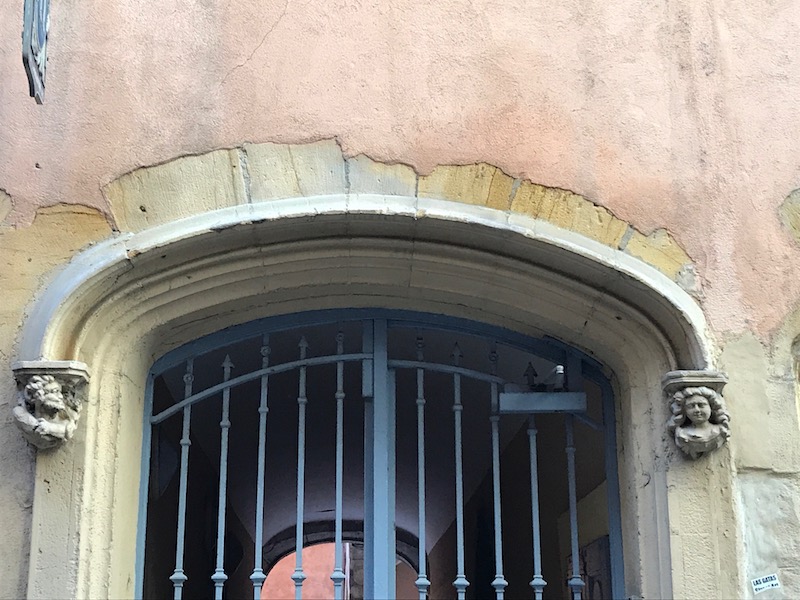

While the building says "Eglise Reformee", this is the Temple du Change or the former Stock Exchange. It was bulit between 1631 and 1653 and then rebuilt from 1748-1750. The small classical building became too small very quickly for Lyon's money exchange and in 1748, it was enlarged, including adding a 5th arch in the front giving it a more true classical design with a central bay. It was changed into a Protestant church (hence the name "Temple" and the words "Eglise Reformee" on the front) in 1803.

We did our first of 2 sightseeing cruises on this first day, which took us from basically our hotel up north on the Saône river past the Croix Rousse district. The cruises went on the Saône River, one of two that flow through the middle of Lyon. This flows into the other river, the Rhone, at the top of the Presqu'île. There are 31 bridges in Lyon, some which are solely pedestrian. As we started, you can see a pedestrian bridge up ahead and the 24 columns of the Court of Appeals building on the left.
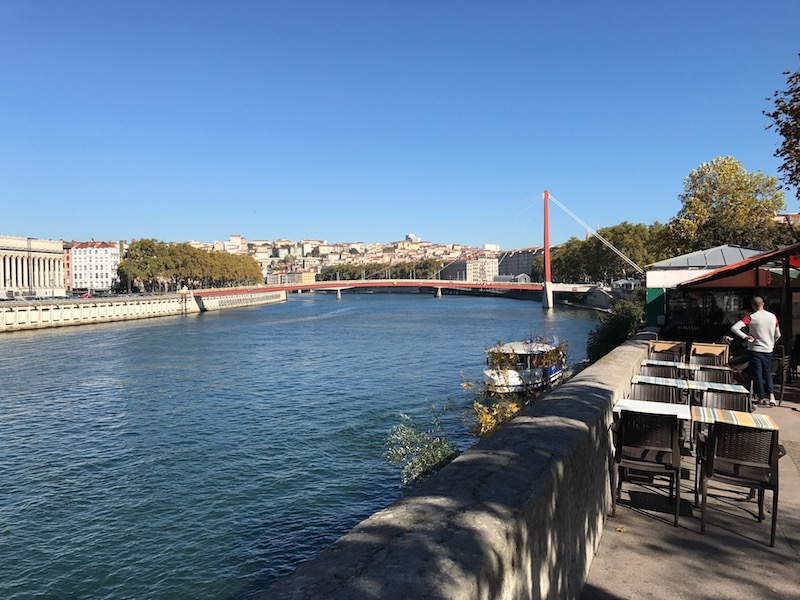

This large building is the École Nationale Supérieure des Beaux-Arts de Lyon (the National School of Fine Arts). It is part of Les Subsistances, which is a cultural center housed in a former convent. In 1640, the Sisters of the Order of the Visitation of Holy Mary acquired the current site of the quay of the Saône, and built a small monastery and a church. It then became the convent of Sainte-Marie des Chaînes, named because at that place in the river, chains had been put across the river to stop smugglers who wanted to enter in Lyon by river. The nuns were expelled during the French Revolution and it became a military camp, which it stayed until 1995 when it was given to the city and changed into the school.
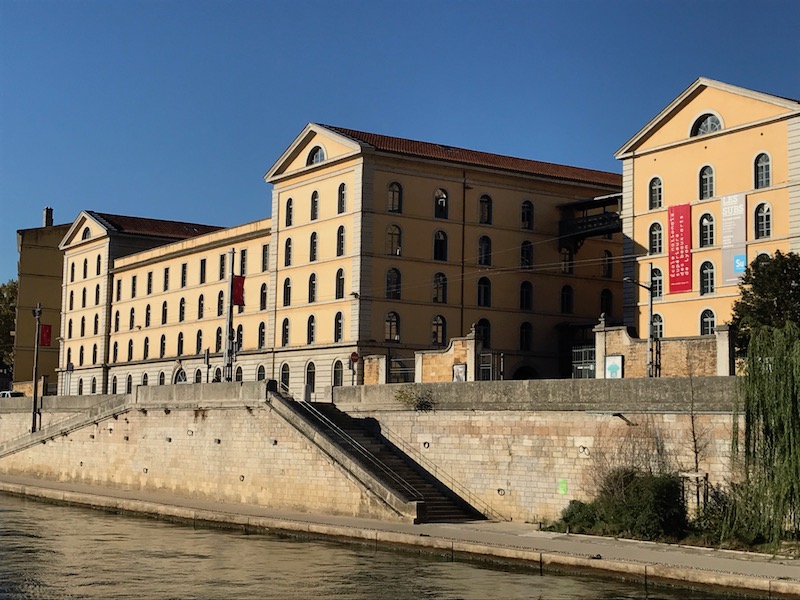
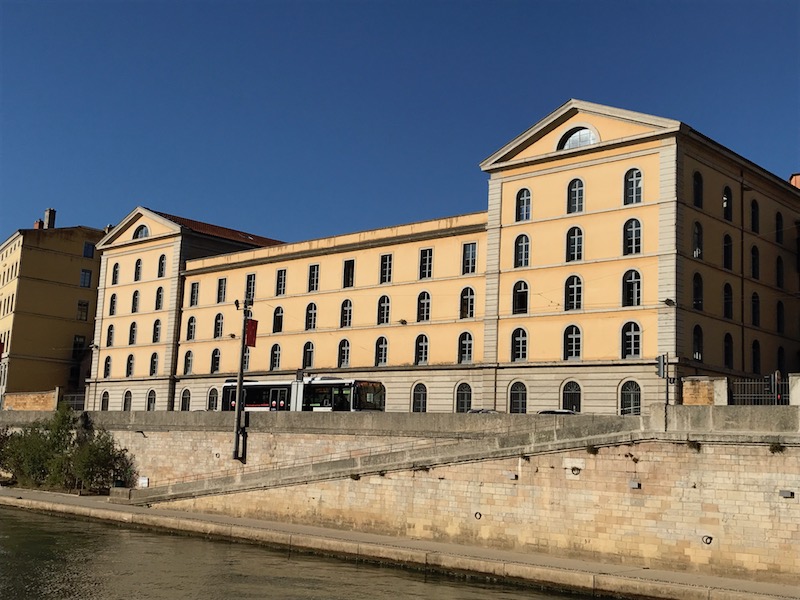
Can you imagine going to school here? This is the National School of Public Finance, housed in what used to be Fort Saint-Jean. It started as just a bastion built into the wall around Croix-Rousse hill in the 16th century. It was expanded to include these buildings in 1834.
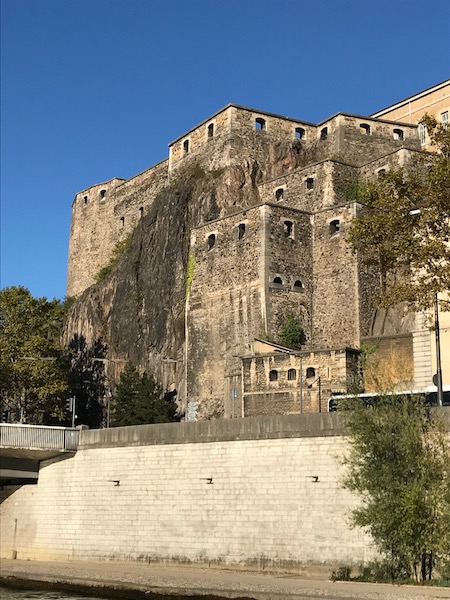
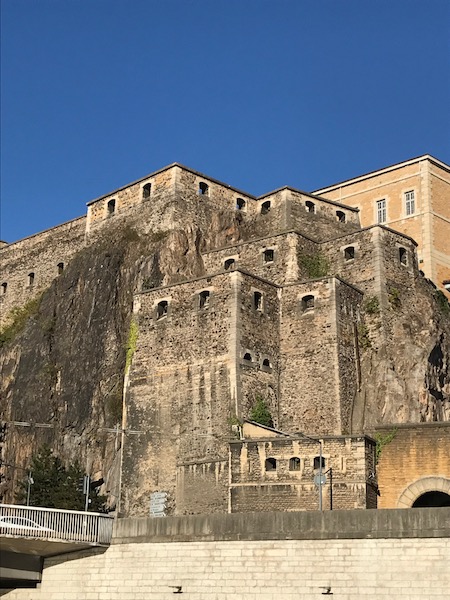
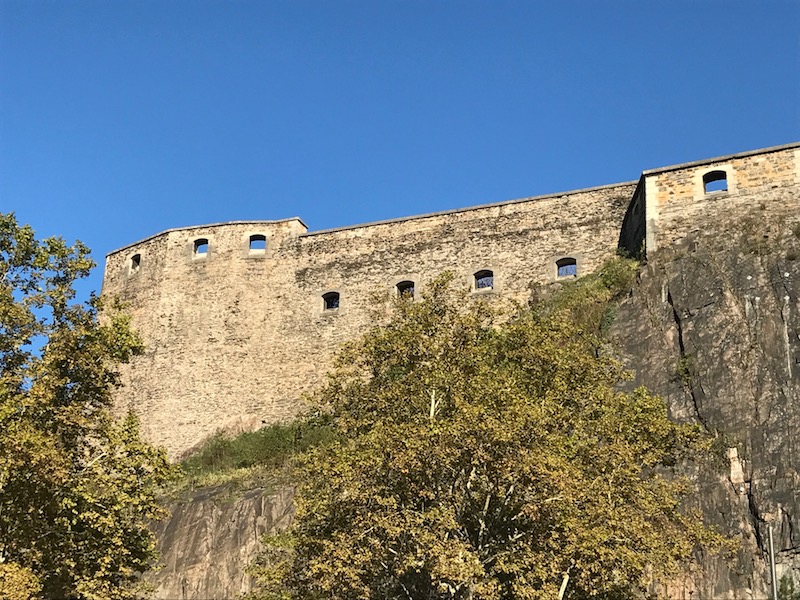
I mentioned there are 31 bridges in the city although Wikipedia lists 33 ... 16 on the Rhône and 17 on the Saône. This first picture is the Masaryk Bridge, which dates back to 1831. I liked the look of the large pillar, which is one of the oldest in the city. This bridge is one of those that is restricted to pedestrians and cyclists. Behind it, you can see the white arches of the Schuman bridge, which was built in 2014.
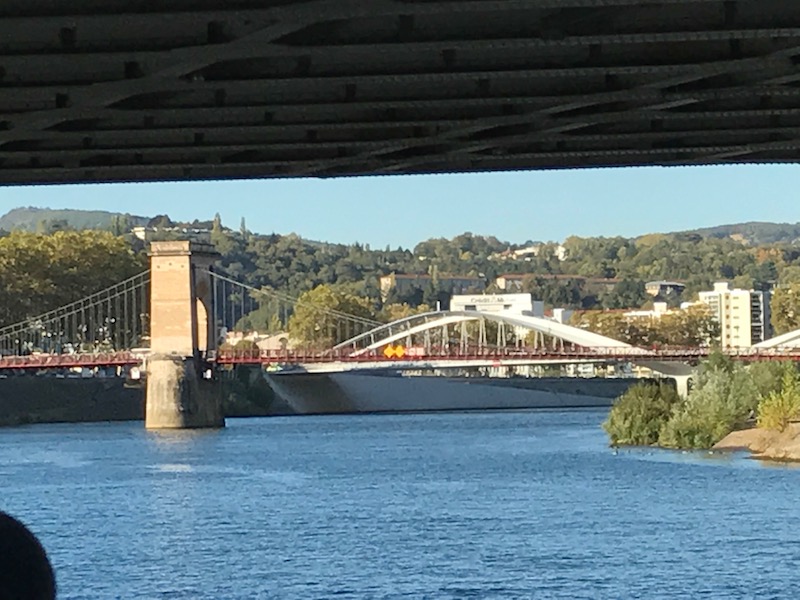


A bit difficult to see, but this is the Paul Bocuse brasserie called "Ouest" (or West). He is basically the father of Lyon Gastronomy. In addition to his 3-star luxury restaurant, he has a set of brasseries in Lyon named named Le Nord, Le Sud, L'Est, and L'Ouest, (North, South, East, and West). Each specializes in a different aspect of French cuisine. We didn't eat at his places this time, but we did one (I think Le Sud) on our last trip to Lyon.
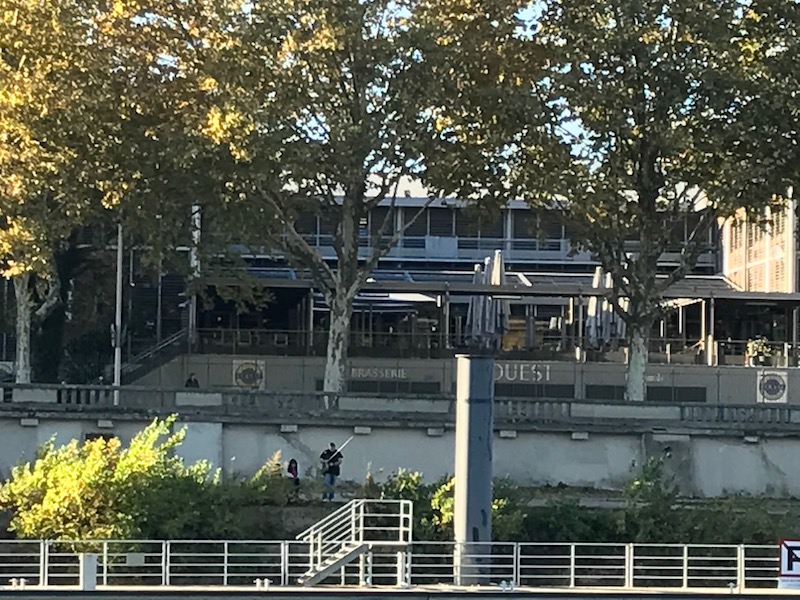
This is some artwork that is along the river, although I failed to get a really good picture. This is a series of African masks done by the Cameroonian artist Pascale Marthine-Tayou.

In the middle of the river sits Île Barbe, meaning Barbarians' Island. An abbay was bounded on the island in the 5th century, making it one of the oldest in all of Gaul. It was accessible only by boat until 1734, which a wooden bridge was built. It was replaced by a suspension bridge in 1827, which is still there and is the oldest in Lyon still in service.
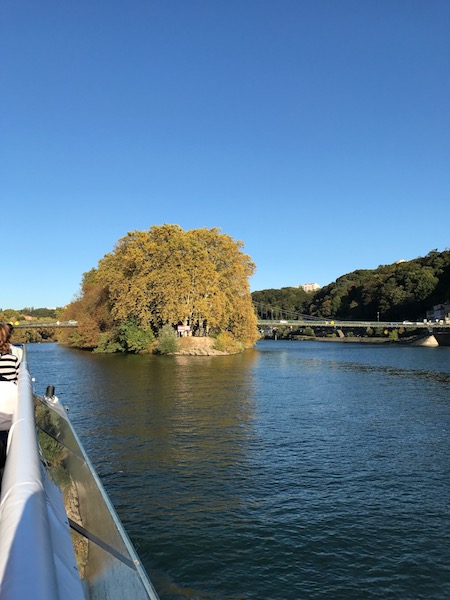

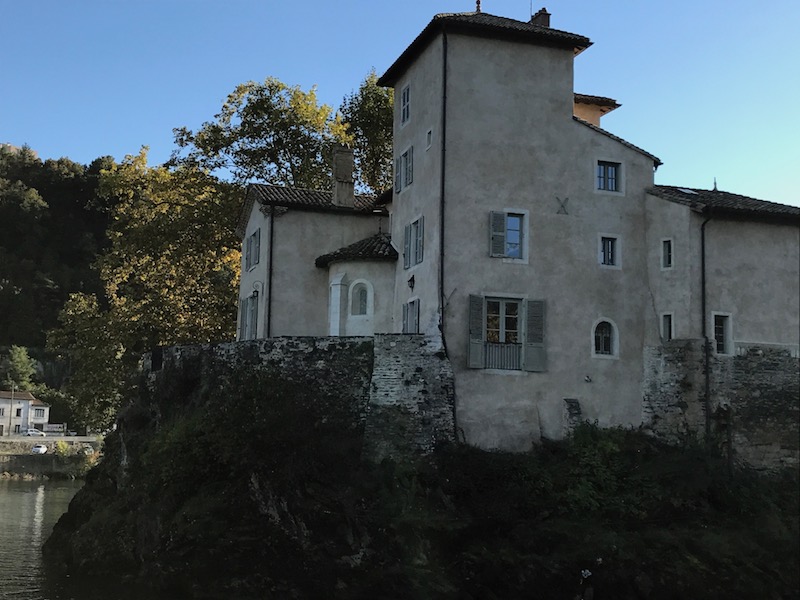

In and around Île Barbe, there are a few additional pieces of artwork that mimic the Colette Square 'Art Nouveau' entrance of the Paris metro. Also done by Jean-Michel Othoniel, they are called 'The Belvedere and the Lanterns' and is made up of blown glass from Murano, Italy.
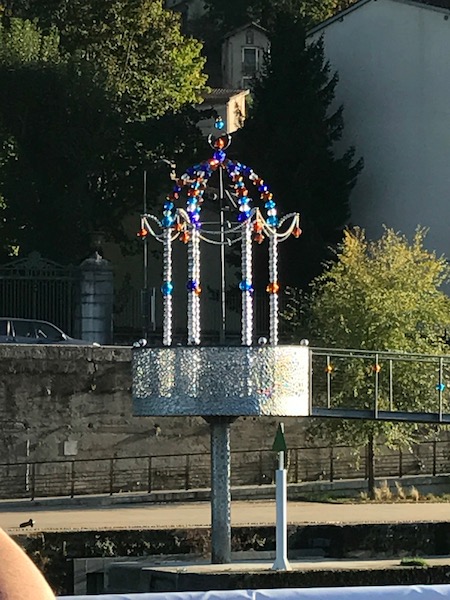
These I don't think are anything in particular, but just nice houses that we could see from the water.
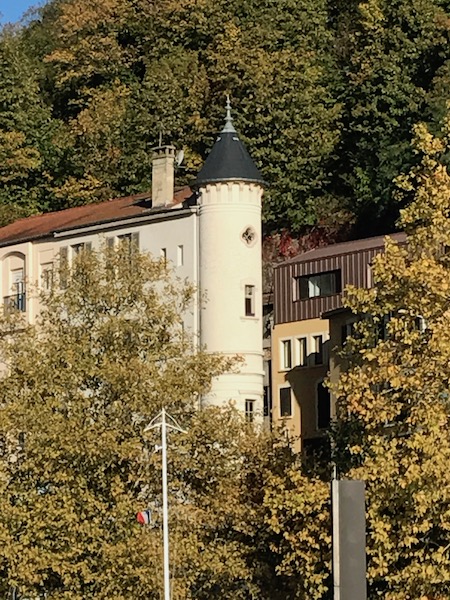
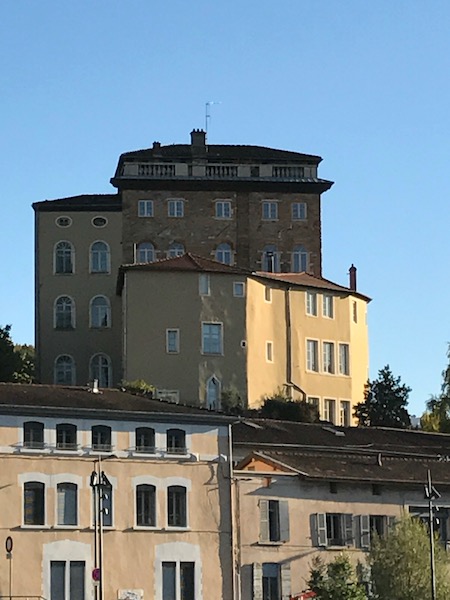
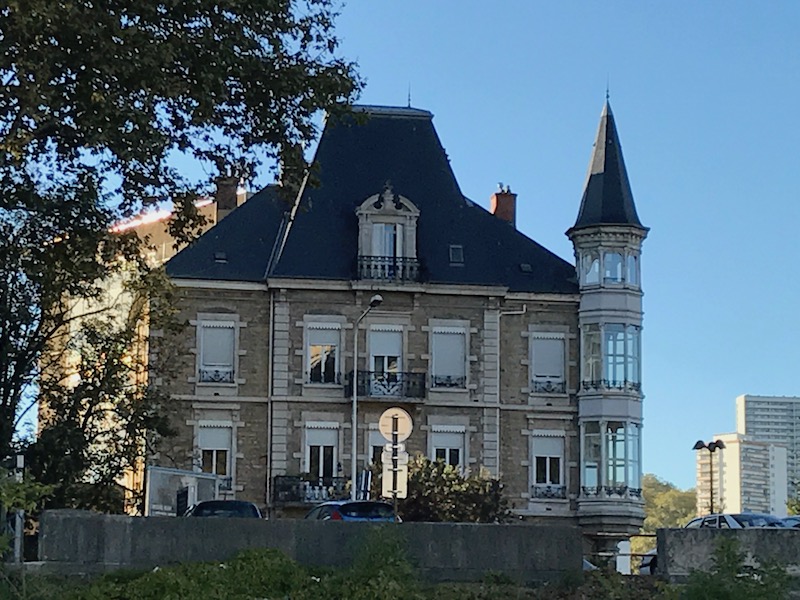
Today, this is the National Conservatory for Dance and Music, but it started out as (you guessed it), a convent. This one was the Convent of the Sisters of St. Elizabeth in the 17th century. After the French Revolution, it become the oldest veterinary school.


The tour guide on the boat mentioned that some people say that the Basilica on the hill looks like an upside-down elephant, with the bell towers being the legs.
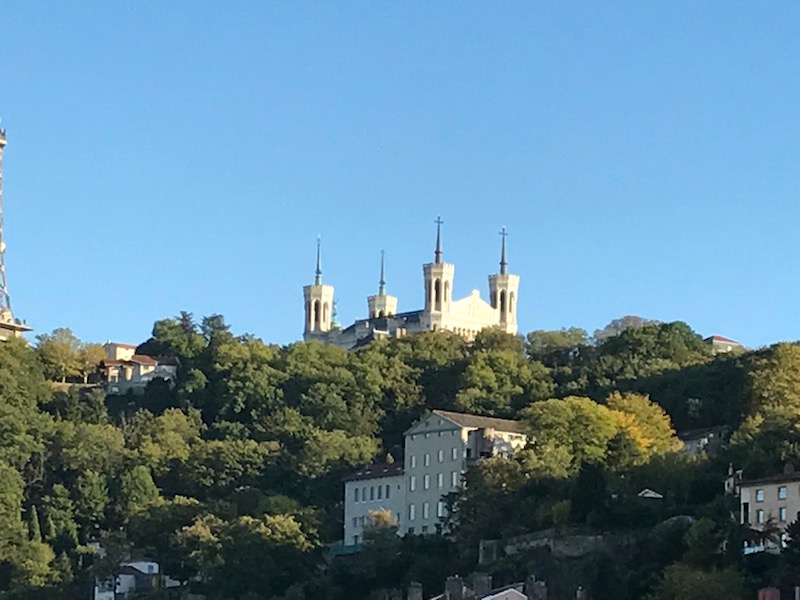

This statue is entitled Homme de la Roche, or Man of the Rock. It is of Johann Kleberger, nicknamed "Nice German". He was a German philanthropist who had moved to Lyon and seems to have been very helpful during a serious crisis in the city, earning him the nickname and a statue within a grotto on the river. The current statue dates back to 1849 ... the previous statue represented Johann as a Roman, with helmet and armour.
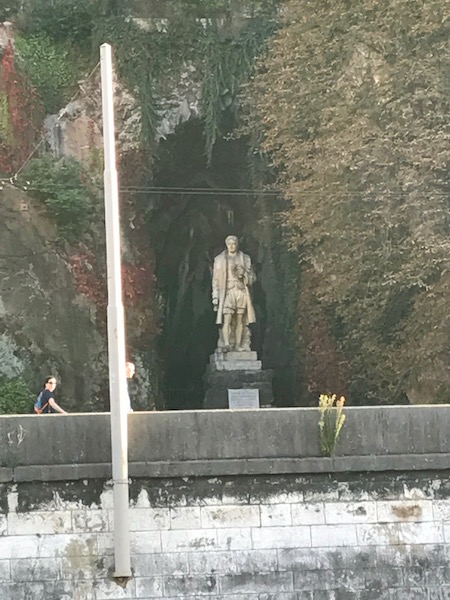
This is quite iconic, and you'll see it again on another day (the other side of it). Lyon is also known as one of the cities in the world with the most number mural paintings (frescoes) ... over 150! This one is visible from the river itself, and is called La Fresque des Lyonnais. The windows on the "big" side of the building are real, the small sliver side (with 2 windows on each floor) is actually a painted wall. Painted in 1995 by CitéCréation, this fresco has become one of the city's star attractions. This side really bland, however ... the other large side of the building is a total mural as well, with 31 important people from the region represented, including Paul Bocuse (the chef), Saint-Exupéry with his Petit Prince (the book), and the puppet Guignol and his inventor.
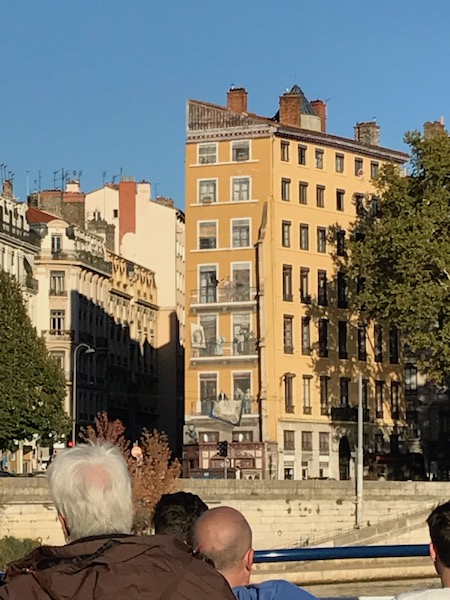
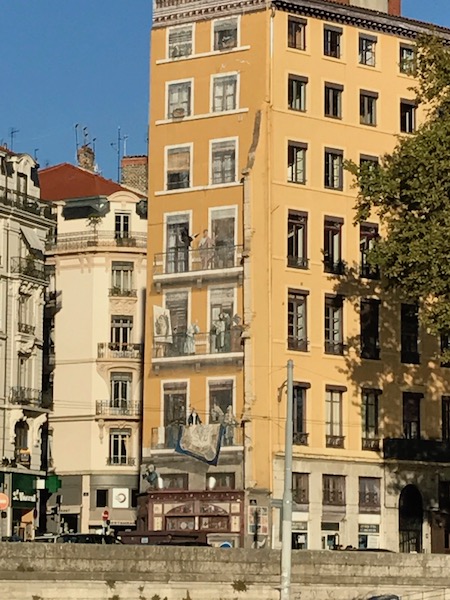
This church that seems to be stuck in the middle of others is Notre Dame Saint-Vincent. Built by Augustinian monks in 1759 although not finally completed until 1789. The facade of the church, decorated with a statue of the Virgin Mary and a frieze, was made by Charles Dufraine and has a round arch and two Ionic columns.
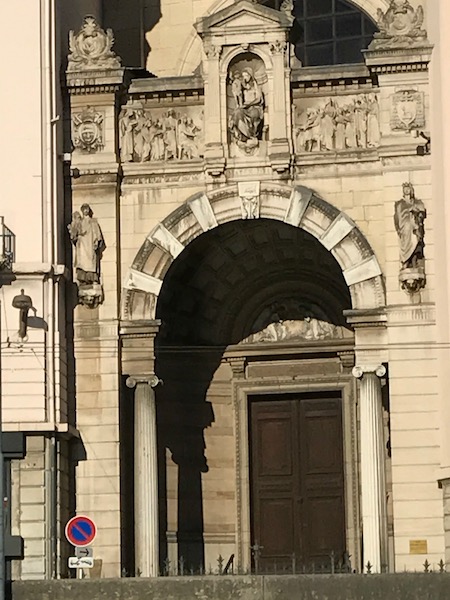
The Church of Saint-Nizier as seen from the water ... we'll do a detailed tour with the interior on another day. The church is mainly built in the Gothic style with a Renaissance portal. It is notable because it has 2 spires, but each has a totally different style .. the left in red brick and the right made of limestone and carved in a flamboyant gothic style.
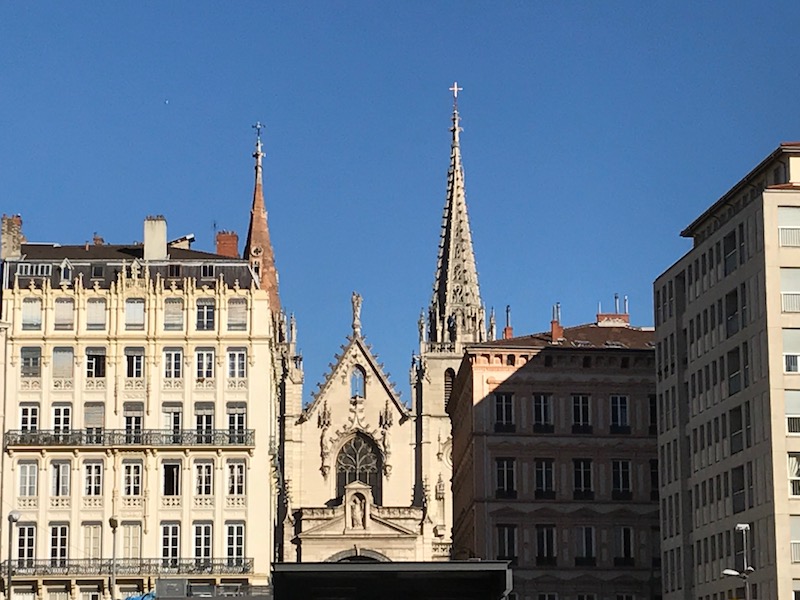
First dinner ... we had tried to do all of our dinners in authentic bouchons. As you walk around Lyon, especially in Vieux Lyon (Old Lyon), you think that every restaurant is a "Bouchon Lyonnais" since they ALL say it. So in 1997, a group was organized to find and "tag" those that were authentic bouchons. Our first restaurant was in the list. The interior takes you back 40 years ... which is how long the current chef, Chef Alain Vigneron, has been there! And this is a little fact that the staff tells you, no less. Take a look at the 2nd picture ... that is actually the wine cooler, a very old wine cooler.


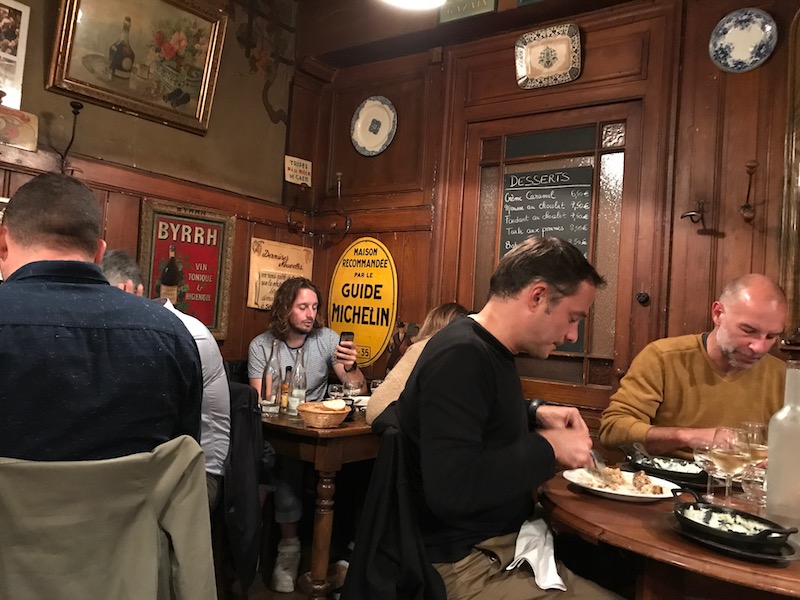
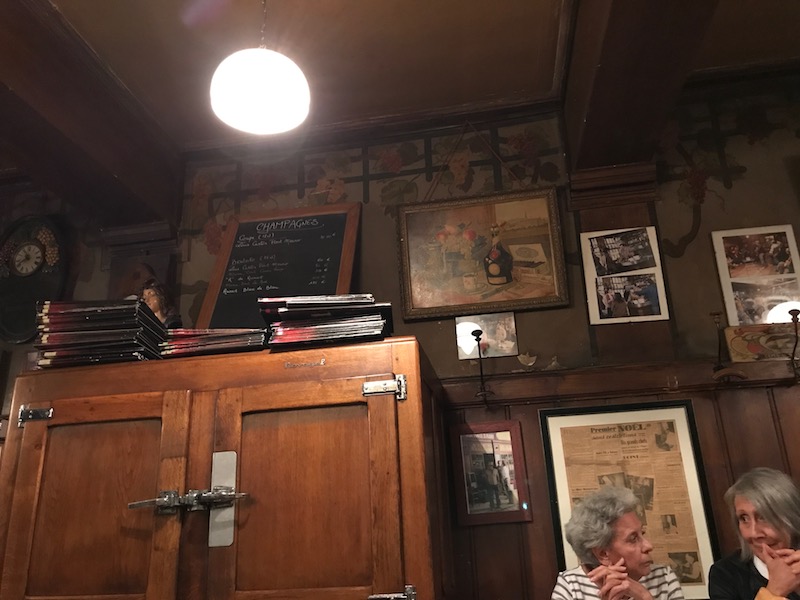
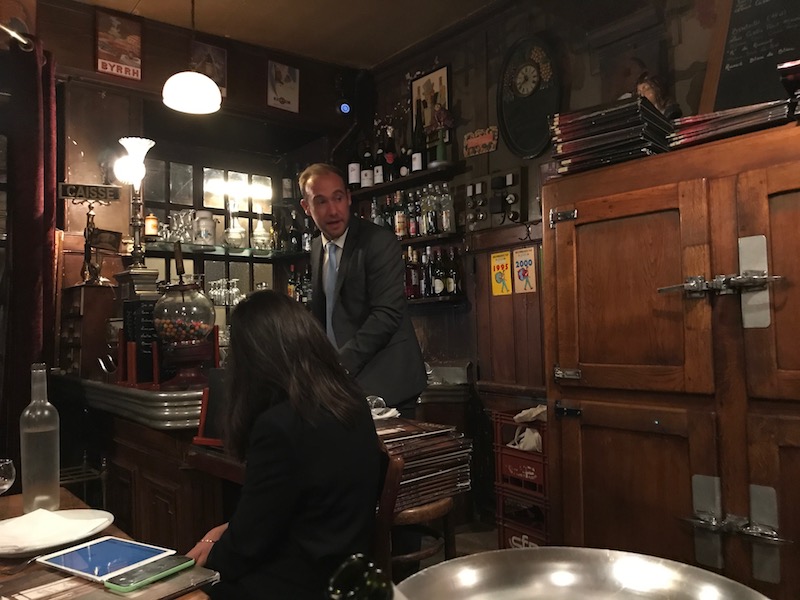

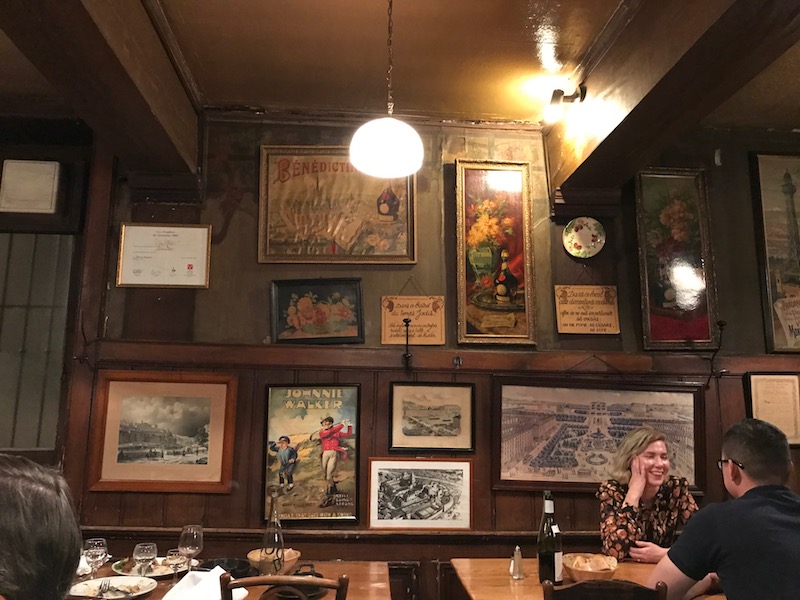
Sausage and lentils along with a "salade lyonnaise", which is the local salad with egg, bacon, and croutons. Tom had the quenelle, which is a poached, egg-shaped dumpling made of creamed Pike fish, in this case served with a creamy mushroom sauce. Susan went with chicken supreme in a white cream sauce with fall vegetables. One of the problems with the bouchons is that they tend to serve lots of "offal", or organ meats (brains, kidneys, tripe), which I just don't eat. Then a couple traditional desserts: a chestnut pie (chestnuts are very "Fall") and apple tart (apples also being very "Fall").
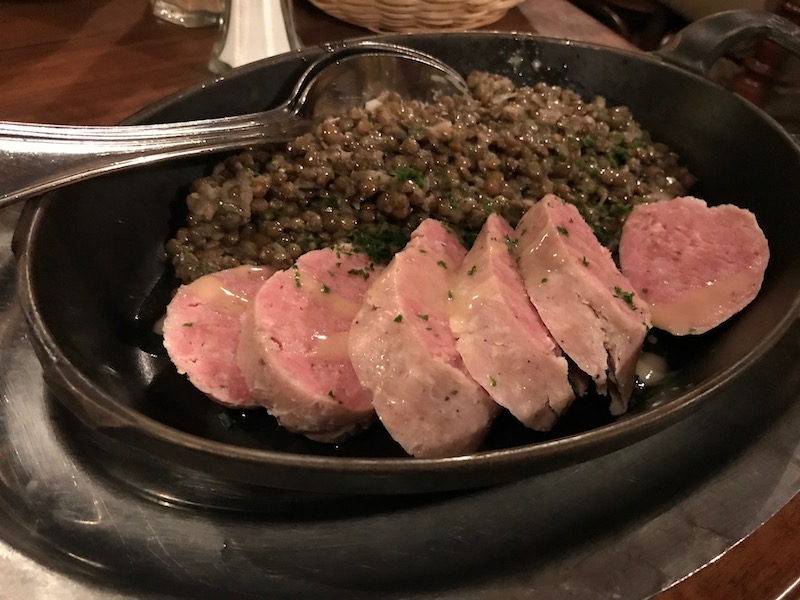
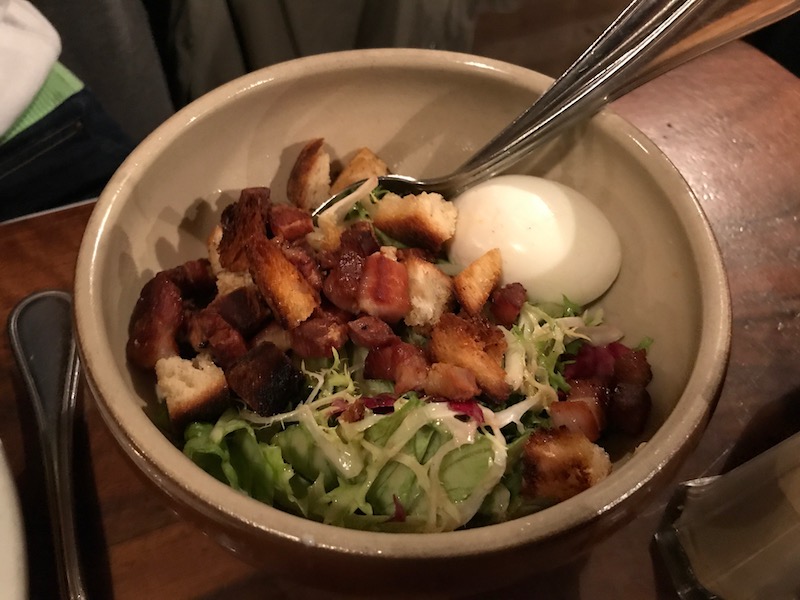
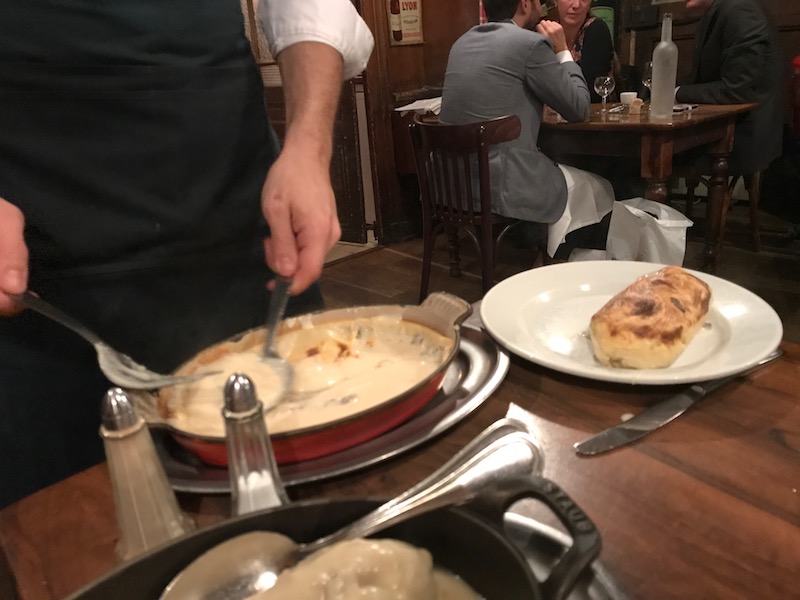


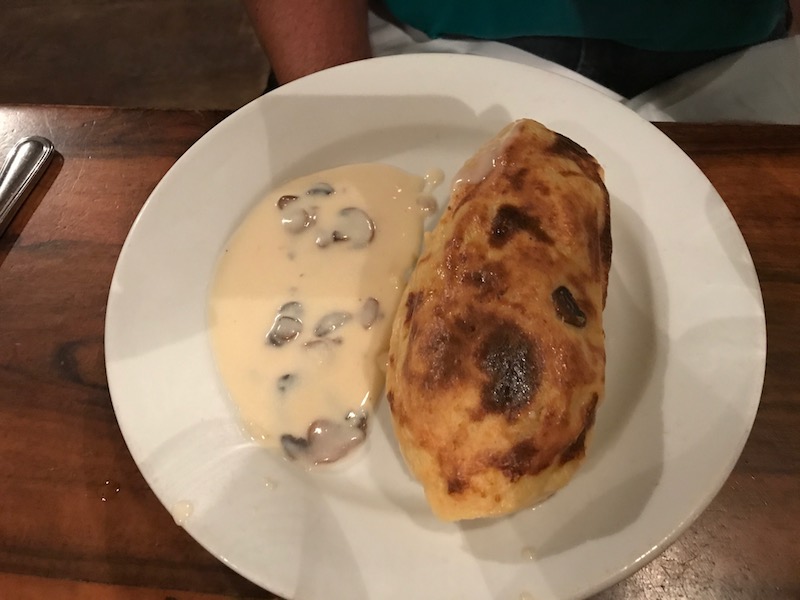

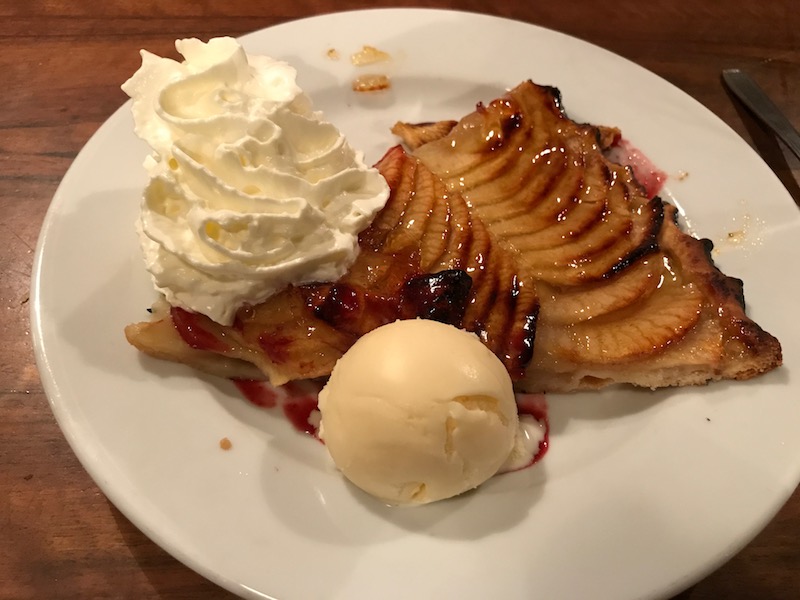
I don't actually think we got a picture of this during the day, but this is the Théâtre des Célestins. The first theater here was opened in 1792 and Napoleon I attended a show here in 1802. It become too small and fell into disrepair, and then it was destroyed by fire in 1871. A new, larger theater was built and opened in 1877, making it one of the few in France that have been used continuously for over 200 years. It is named after a convent and church of the Celestine order, which occupied the site between 1407 and 1789.

And as we got back to our hotel, you could see the Basilica lit up on the top of the Fourvière hill.
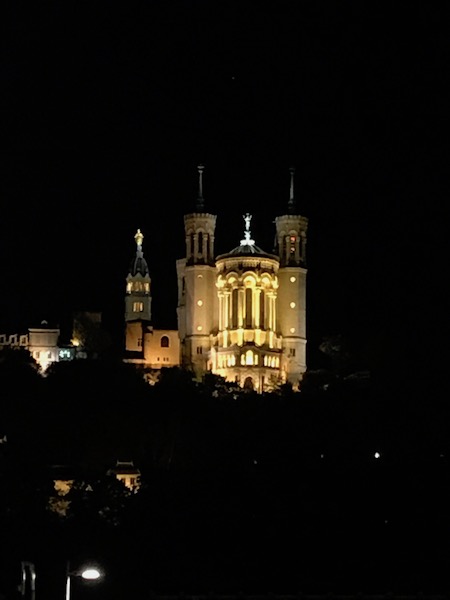
Go straight to Lyon Day 2
or go back to the main Lyon blog page.